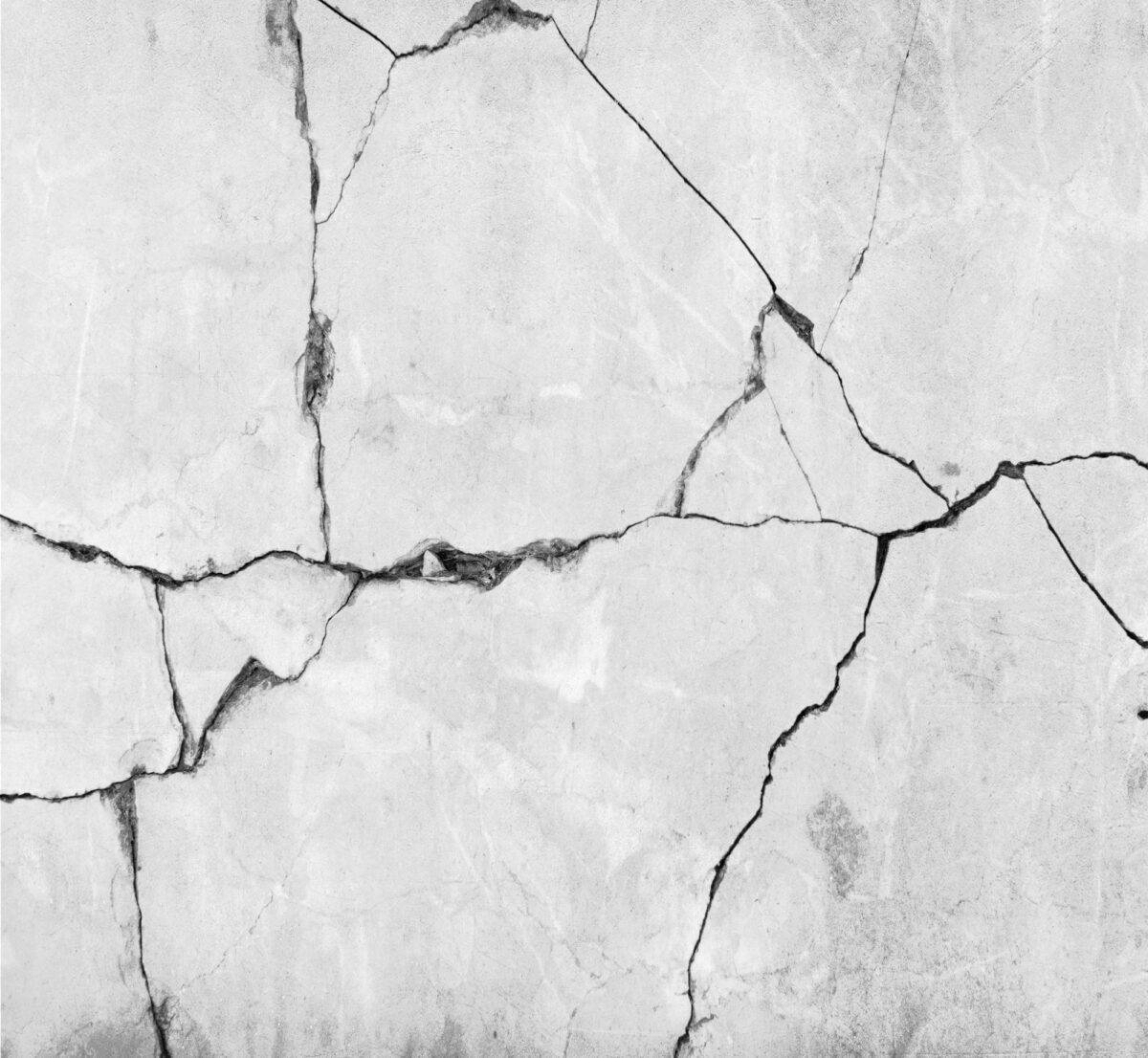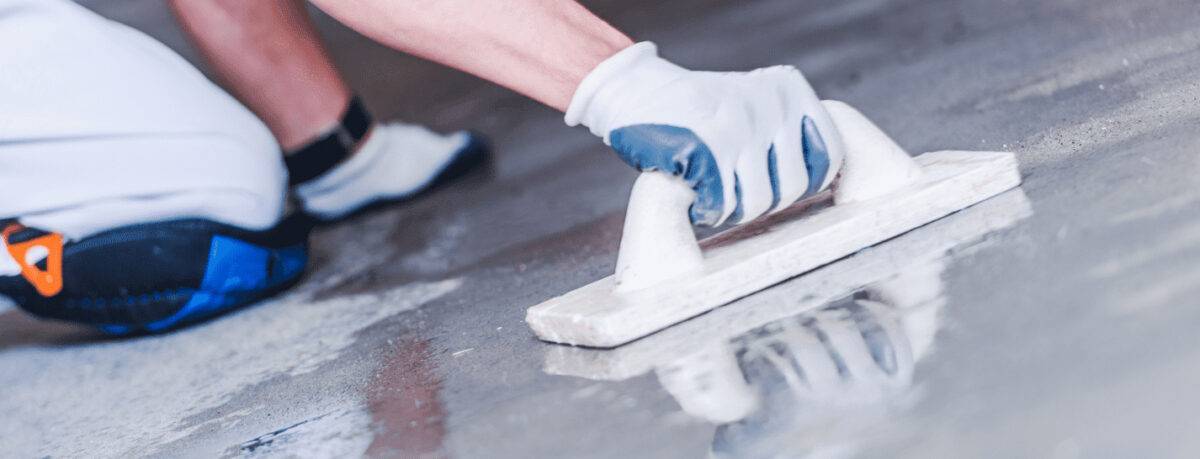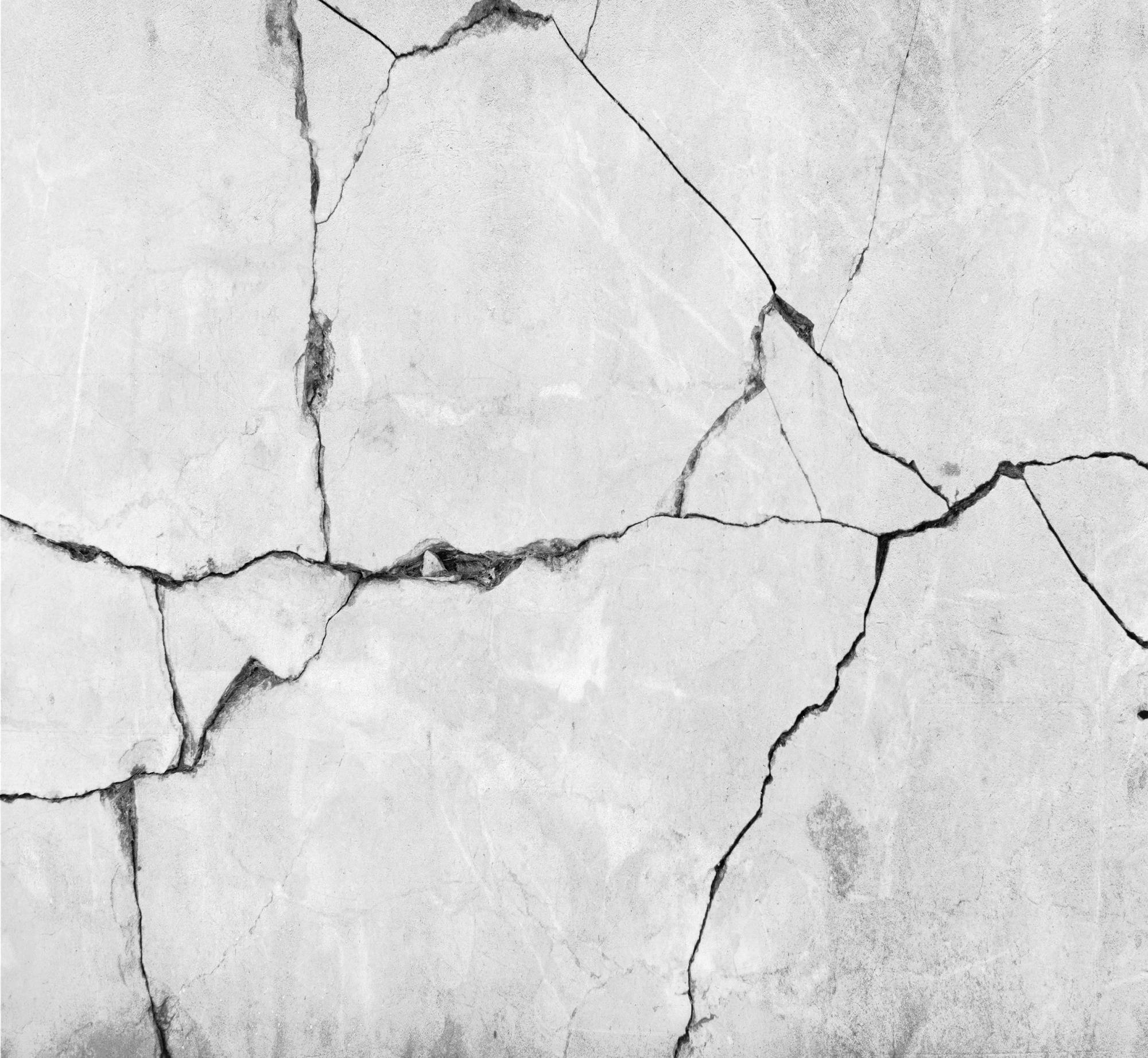
When cracks appear in your concrete, the first assumption is that whoever laid the slab did something wrong. While there is a chance something went wrong during installation, such errors are usually evident right away (between 1 month and 1 year). All concrete cracks over time, which is normal and typically not concerning.
Did you know there are different types of concrete cracks?
Some cracks you can quickly repair yourself; some require a professional fix; and for others, you may need to replace the concrete slab.
This article will help you determine what type of concrete cracks you have, how to tell if a crack is from natural or human error, and when your concrete needs a professional repair.
What Types of Concrete Cracks Are There?
When concrete cracks, there is usually an explanation. Knowing what type of crack you have in your concrete will help you determine how to repair it.
Heaving Cracks
Heaving concrete cracks are caused when the ground freezes and thaws.
Natural ground movement can cause the concrete slab to crack. Tree roots can also trigger heaving concrete cracks by lifting and breaking the concrete surface.
Be aware of trees when laying concrete because roots can grow in every way.
Settling Cracks
Settling concrete cracks happen when the ground just below the concrete surface settles and moves. This happens for several reasons:
- Roots decompose
- Digging and/or construction nearby
- Changes in the moisture content of the soil
When these cracks form, they can cause significant damage to the concrete surface and should be repaired as soon as possible.
Overloading Cracks
Overloading cracks form when too much weight is placed on top of the concrete. This weight can be from large vehicles, dumpsters, or even people.
When the ground below the concrete is soft, the excess weight causes the concrete to press down.
Plastic Shrinkage Cracks
Plastic shrinkage cracks happen when the concrete is still in its plastic state (when it’s drying) and the water within begins to evaporate. This leaves large voids between the solid particles, which weakens the concrete weaker and makes it more vulnerable to cracking.
These shrinkage cracks usually occur at reentrant corners (corners pointing to the middle of the slab). In the case of circular concrete designs, shrinkage cracks typically occur in the middle of a slab.
Plastic shrinkage cracks are usually small and barely noticeable. Too much water in the concrete mix and hot weather are the main reasons for plastic shrinkage cracks.
Expansion Cracks
Concrete expansion cracks occur when concrete expands and contracts as it heats up and cools down.
These cracks can be straight or circular. You’ll notice concrete expansion cracks most often at the joints where different sections of concrete meet. So it’s really important to have proper expansion joints in place when pouring new concrete.
Premature Drying Cracks
Premature drying of concrete can cause several different types of cracks. The two most common are crazing cracks and crusting cracks.
- Crazing cracks are fine surface cracks that resemble spider webs or shattered glass.
- Crusting cracks can happen when the concrete is stamped.
If the concrete is poured on a sunny or windy day, the top of the slab can dry out quicker than the bottom, causing the concrete’s surface to become crusty.
Also, when a concrete stamp is embedded, it can pull the surface apart near the stamped joints and trigger small cracks around the outside edges of the stamping pattern. These crusting cracks are not structural damage and can be easily repaired.
Will Concrete Stop Cracking After It Has Been Poured?

Concrete will typically crack as it dries and settles.
While these cracks can be unsightly, they usually don’t cause any damage and will stop expanding after a few days. If you have any significant or concerning breaks, consult a professional before taking action.
How To Tell if the Concrete Was Poured Incorrectly?
While natural factors can certainly cause cracking in your concrete, it’s also quite possible the contractor didn’t install it correctly.
Below are a few signs that your contractor didn’t do the job right:
- Bleeding: Excess moisture and water come up to the surface. Some bleeding is natural, but excess bleeding is not.
- Delamination: When one piece of concrete separates from another significantly but is still attached to the main piece.
- Honeycombing: You’ll notice multiple voids and air pockets in the concrete.
- Spalling: When large chunks of concrete begin falling away.
How To Know When a Concrete Crack Needs Fixing
To see if your concrete crack is harmless or needs attention, use a quarter. If you can fit a quarter in the crack, you may have a problem.
However, any crack that is 1/8 of an inch or less is typically considered a harmless hairline crack.
Do Warranties Cover Concrete Cracks?
The short answer is no.
Contractors rarely provide a warranty for something they have little or no control over.
Yes, they have control over the three to seven inches of concrete they pour and can vouch for the hardness and correct composition of the concrete mix, but most variables that contribute to a crack involve nature:
- Weather
- Outside temperature
- Moisture
- Ground temperature
- Wind
Concrete contractors purchase a ready mix of concrete to which they add water and gravel to make your concrete. If the company making the ready mix makes a bad batch, that is not under the purview of the contractor and won’t be covered by warranty.
Cosmetic vs. Structural?
While your concrete may crack, it’s out of your control. Minor cracks are part of having concrete poured. Wait about a month after your concrete has been poured to assess if there are any significant problem cracks.
If the cracks are unsightly, a concrete contractor can help you assess if the crack is:
- Cosmetic, in which case you can either replace or ignore it.
- Structural, which means the slab needs to be replaced.
Is Asphalt More Durable Than Concrete?
In the everlasting debate of asphalt vs concrete comparison, durability plays a pivotal role. While both materials possess their own strengths, asphalt tends to be more flexible, acting as a cushion against freeze-thaw cycles. Concrete, on the other hand, may crack over time due to its rigidity. Ultimately, the choice depends on specific needs and conditions.
Learn More

Tulsa Concrete Contractor can help you figure out what caused the crack in your concrete and how to fix or replace it in the best way. Together, we’ll look at all of your repair and replacement options and decide which is best for your long-term safety and what you want.

